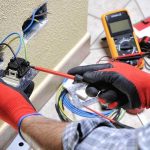Clinics require a wide range of equipment and devices in order to provide comprehensive patient care. Clinics must have the necessary devices to provide quality care, including diagnostic tools and medical supplies.
Let’s take a look at the 7 most essential medical devices every clinic should have.
Table of Contents
1. Tracheostomy supplies
Tracheostomy equipment is an important piece of equipment that every clinic should have. Patients who require a breathing tube require this type of equipment. Tracheostomy supplies come in a variety of sizes to accommodate all patients, but the most common sizes are small and large. The smaller size is likely to fit the majority of pediatric patients, while the larger size is intended for adults.
Adult and pediatric sizes, as well as the supplies needed to keep the tube in place, should be available in clinics. This ensures that patients receive the best possible care and that they can breathe comfortably while being treated by doctors.
2. Monitors of vital signs
A vital sign monitor is one of other important medical supplies that every clinic should have. These devices measure blood pressure, heart rate, respiratory rate, temperature, oxygen saturation levels, and other parameters. These devices are important for clinics because they help to ensure that patients are healthy and stable.
Vital sign monitors can help clinics track a patient’s progress over time and identify potential problems early on. This will allow for more effective treatment and the avoidance of major health complications.
3. Poles and intravenous equipment
Intravenous equipment is another essential device for clinics. This equipment is required for the administration of fluids and medications to patients. Intravenous equipment can assist in ensuring that patients receive the appropriate amount of fluid and medication, which is critical for their overall health.
Adult and pediatric sizes, as well as the supplies needed to keep the line in place, should be available at clinics. Patients may suffer serious complications if they are not properly medicated via IV.
In addition, IV poles are beneficial in clinics because they help keep the area around the patient’s bed clean and organized. This makes monitoring and caring for the patient easier for nurses. Clinics should have a variety of different-sized IV poles and stands to best meet the needs of their patients. Some clinics, for example, may require IV poles that can be folded up or disassembled when not in use.
4. Wheelchairs
A wheelchair is another essential medical device that every clinic should have. Wheelchairs are intended to make it easier and more comfortable for patients to move around. They are available in a variety of sizes, shapes, and colors, allowing them to complement any clinic decor. Wheelchairs are also useful for transporting patients who are unable to walk and require assistance moving from one location to another within the facility.
This is especially beneficial for patients who are recovering from surgery and require assistance getting around on their own. Just keep in mind that wheelchairs should always be used under the supervision of trained staff members.
5. Tanks of oxygen
An oxygen tank is one of the most important medical devices that every clinic should have. When a patient requires supplemental oxygen to breathe properly or has a serious respiratory condition, these devices are used. An oxygen tank can be used in a variety of situations to provide oxygen to patients who are unable to breathe on their own. Clinics should stock a variety of sizes so that they are always prepared with the appropriate tank size for each patient’s needs.
These are just a few examples of the essential medical equipment that every clinic should have. These types of medical devices are essential for clinics because they help ensure that patients receive the best possible care and can breathe comfortably while being treated by doctors. Clinics can provide all-inclusive patient care and ensure their patients’ health and stability by having these devices.
6. Anesthesia Material
This includes all of the extra tools needed to make it more efficient in a modern hospital setting, such as a suction unit, patient-monitoring devices, and a ventilator. These are critical for maintaining a patient’s level of anesthesia by providing a continuous and accurate flow of medical gases.
7. Ultrasound machines and X-Rays
To see inside a patient’s body, doctors use ultrasound and X-ray machines. They are the most important machines that any hospital or clinic should have. Ultrasound is very useful. It reduces radiation and helps with disease diagnosis and detection.
Sound waves are used by ultrasound machines to pinpoint the source of pain, as well as the causes of swelling and infection. It also helps detect pregnancy and locate the organs of an unborn baby. These machines are really helpful to find some diseases or problems that might not be visible otherwise.
Here are some of the most used machines that are essential for quality care. In order to provide good and efficient care to patients, clinics and hospitals must have these equipments. These will ensure that both doctors and patients will take advantage of quality material and that the suffering person will receive efficient healthcare based on its problem.











